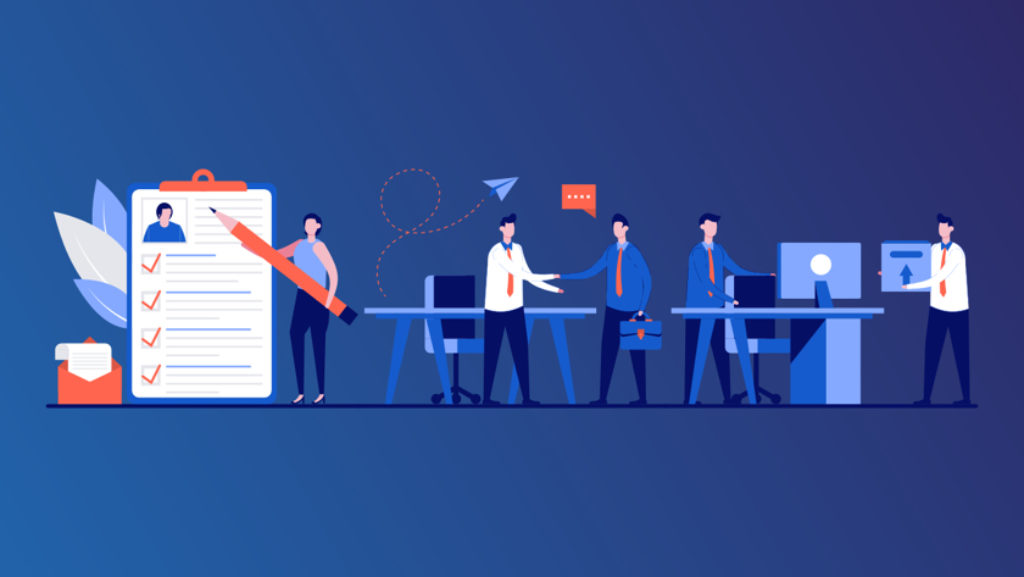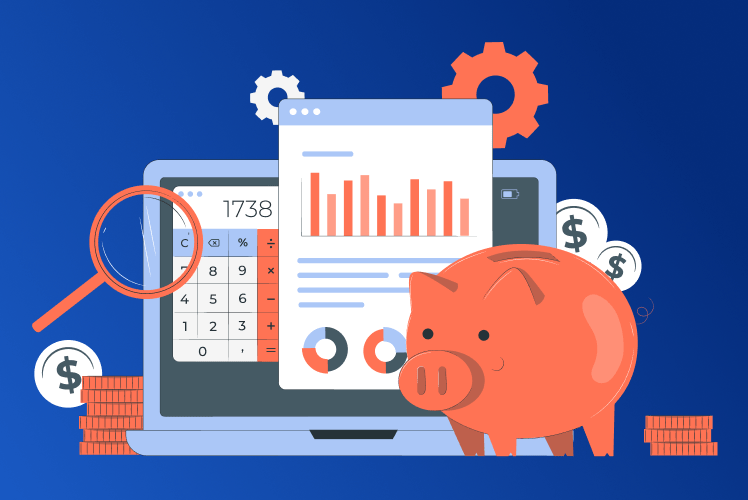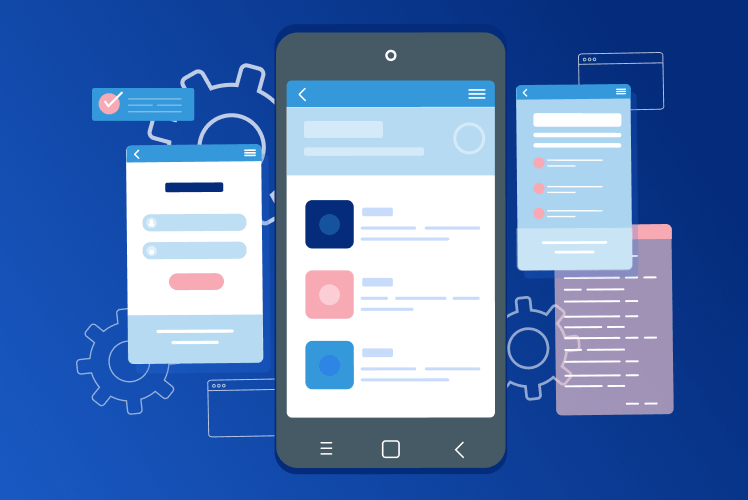Table of Contents
If you ever hired an employee, you must be familiar with the concept of onboarding. Employee onboarding is one of the most efficient ways to cultivate one’s loyalty and reaffirm to the candidate that they made the right decision in choosing your company.
While the onboarding process is unique for every company, there are several core components that every onboarding process should contain. In this article, we’ll explain not only these components but also the tangible and long-term benefits of onboarding for your organization.

Onboarding: the definition and ultimate benefits
Before getting down to the onboarding process set up, let’s define it first. Onboarding is the process of integration and adaptation of a new employee to an organization. It is vital since employees are the core of any enterprise and they directly impact the company’s growth and development. As a company owner, it’s your responsibility to organize a smooth process of familiarization with the company and invest time and resources into the newcomers’ training.
The tangible ROI of a successful onboarding usually comes in the form of the following benefits:
- for the company owner: reduced retention rate prevents financial losses associated with employee search, hiring, and training;
- for the enterprise: rapid adaptation of employees gives measurable results in terms of speed of development and delivery;
- for employees: increased engagement and satisfaction lead to better productivity and improved corporate culture.
Sounds good, doesn’t it? And now that we listed the biggest advantages of onboarding, let’s move on to the process of onboarding set-up.
The key elements of successful onboarding
The steps that we list below are the core steps of most onboarding processes. You can adapt these steps to your company’s unique corporate culture and integrate certain things that will work best for you.
Introduction and meeting with the team
The first and obvious step in the onboarding process is the introduction of a new employee to the team. Since we’ve been living remotely for a couple of years now, we won’t insist on holding face-to-face meetings – but here is what you can do instead to give your newcomer a warm welcome:
- Organize an online meeting. When introducing a newcomer to their colleagues, explain the roles of team members and with whom the newcomer will be interacting most of the time. As well, it is a common practice to send a welcome email about a new employee across the company.
- Assemble a welcome kit that usually contains branded merch (i.e. stationary or clothing). A well-assembled welcome kit can greatly increase one’s loyalty and engagement and overall it is a nice gesture to welcome a new person to the team.
- Make sure to add a new person to all communication channels and provide them access to the corporate mail and chats.
Assign a mentor
Mentorship is a critical part of the onboarding process since it facilitates the process of blending in for the newcomer and helps them establish contact with new colleagues. And don’t forget that any beginner is likely to have a lot of questions – mentoring is aimed at answering them and providing as much useful information to the newcomer as needed.
The main tangible benefits of mentoring are:
- Increased employee engagement due to constant communication and feedback;
- Easy access to information about the company;
- A rapid introduction of the new hire to the company’s culture;
- Definition and explanation of expectations and goals;
- Reduced employee retention (which leads to lower employee turnover);
- Lower training costs through one-on-one teamwork.
Though not every company can afford to assign a personal mentor to new team members, keep in mind the long-term benefits of onboarding. Thus, try to come up with the most optimal solution in terms of mentoring and in regards to your company’s state and policies.
Set up clear goals and responsibilities
An important part of onboarding is the definition and explanation of newcomer’s responsibilities and goals. Both the supervisor and the employee should have a clear idea about the new role including setting long-term and short-term goals. How can this process be simplified?
One of the best ways is to document these goals and regularly update them. In this way, it becomes easier to monitor one’s progress and provide regular feedback upon request or upon the completion of a certain goal.
Assemble and maintain detailed documentation
Documentation with full information on the company, its organization, and processes is a blessing. It serves as a reference for anyone who has a question and can become a lifesaver for newcomers, especially if they need to quickly answer a certain question.
However, everyone wants to spend their time creating awesome products and not writing lengthy docs. At the same time, you need good docs to help your team build awesome stuff so the creation of documentation becomes inevitable. Don’t worry – we made a short list of great tools for assembling your documentation and keeping it neat and secure in one place:
- DokuWiki: a free Wiki creator that you can use to create your own knowledge base.
- Notion: a comprehensive platform for collaboration that allows building clear and transparent workflows and managing all processes in one place and in an easy way.
- Confluence: a platform for communication and document-keeping that’s widely used in the IT industry.
- BookStack: another wiki-style documentation tool. It’s open-source, self-hosted, and highly flexible.
- GitBook: has seamless integration with GitHub, offers multiple visual customization options, and has an advanced version management system.
We don’t need to remind you that the final choice of your perfect document maintenance tool will largely depend on your company and the structure of your work so keep that in mind.
Create an EJM
An Employee Journey Map is a diagram that displays the interaction between the employee and the company. In its simplest form, it looks like a timeline on which you put dots. These dots indicate significant events that will take place throughout one’s career. Examples of these events are meetings, trainings, courses, salary revisions, promotions.
With the help of the EJM, a newcomer can easily track their upcoming goals. An employer, in turn, can monitor their progress, see what may be optimized or improved, and identify employee’s strengths and weaknesses.
Create and maintain a healthy working environment
This point relates not only to the onboarding process but to your HR processes in general. A supportive and healthy working environment has a direct and significant impact on productivity and well-being of employees. Needless to say, it also makes a big first impression on the newcomers and influences their decision of whether to stay in the company.
So what can you do if you feel like your current situation needs a bit of improvement? Here are some tips:
- Make sure to recognize the achievements of your employees and reward them correspondingly;
- Promote a work-life balance and create necessary conditions for that;
- Create and maintain a robust and fair employee policy that would equally apply to everyone;
- Hold regular team buildings;
- Request feedback from employees to learn what can be improved.
Support and maintain transparent communication
Transparent communication is the process of exchanging both positive and negative information, so that everyone can see the cause of misunderstandings and be aware of the processes happening in the company. In terms of business, transparent communication helps:
- avoid conflicts and misunderstandings;
- complete projects on time due to smooth interaction between team members and between the team and the client;
- improve loyalty and satisfaction of both the team and your clients.
We’ve emphasized the importance of transparent and efficient communication multiple times – so there is no need to go all over it in detail. On the other hand, the lack of transparent communication negatively affects all members of the organization and leads to delays in production and delivery (not to mention internal conflicts and disagreements).
Final thought
If you do not have efficient onboarding yet, now it’s the best time to set it up. If you already have an onboarding process and it seems to work fine, we recommend reviewing it and seeing whether anything can be improved with a structured documentation or implementation of a powerful new tool. And don’t forget that onboarding is a flexible and dynamic process that can be constantly changed and adapted to the changing conditions and your current working environment. Hence, don’t hesitate to introduce new ideas, regularly collect feedback, and enjoy a high level of employee satisfaction and engagement.



Comments